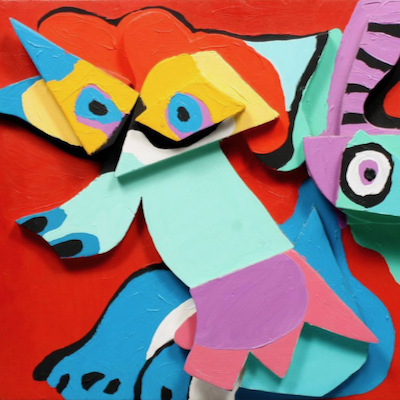
Details
Artist
Styles
Van de Loo 230. Color lithograph printed by Beaudet, Paris // L'oubli by Asger Jorn is a dynamic lithograph created in 1960-61, reflecting the artist's expressive and abstract style. Produced in an edition of 30 and printed by Beaudet in Paris, this piece uses an energetic blend of red, blue, and green strokes layered over a neutral background. The composition is chaotic yet deliberate, with sweeping, gestural lines and splashes of color that suggest a tension between order and spontaneity. Jorn’s technique reflects the influence of the CoBrA movement, which valued raw, unfiltered creativity and often evoked a sense of primal energy. L'oubli captures the essence of forgetting or erasure, evoking layers of memory and emotion through its complex visual interplay.
L’oubli, 1960/61
form
Medium
Size
41 x 56 cm
- Inches
- Centimeters
Edition
Price
- USD
- EUR
- GBP
Details
Artist
Styles
Van de Loo 230. Color lithograph printed by Beaudet, Paris // L'oubli by Asger Jorn is a dynamic lithograph created in 1960-61, reflecting the artist's expressive and abstract style. Produced in an edition of 30 and printed by Beaudet in Paris, this piece uses an energetic blend of red, blue, and green strokes layered over a neutral background. The composition is chaotic yet deliberate, with sweeping, gestural lines and splashes of color that suggest a tension between order and spontaneity. Jorn’s technique reflects the influence of the CoBrA movement, which valued raw, unfiltered creativity and often evoked a sense of primal energy. L'oubli captures the essence of forgetting or erasure, evoking layers of memory and emotion through its complex visual interplay.
What is the CoBrA movement?
CoBrA stands for Copenhagen, Brussels, and Amsterdam; the group was formed with a desire to break away from the existing art movements of the time. Their critique of Western society led them to experiment and evolve into a significant international movement. CoBrA was founded on November 8, 1948, at the Notre Dame Café in Paris, where its manifesto was signed by Karel Appel, Joseph Noiret, Corneille, Christian Dotremont, Constant, and Asger Jorn. The group was united by a shared commitment to freedom in both form and color, and their work emphasized experimentation and spontaneity.














